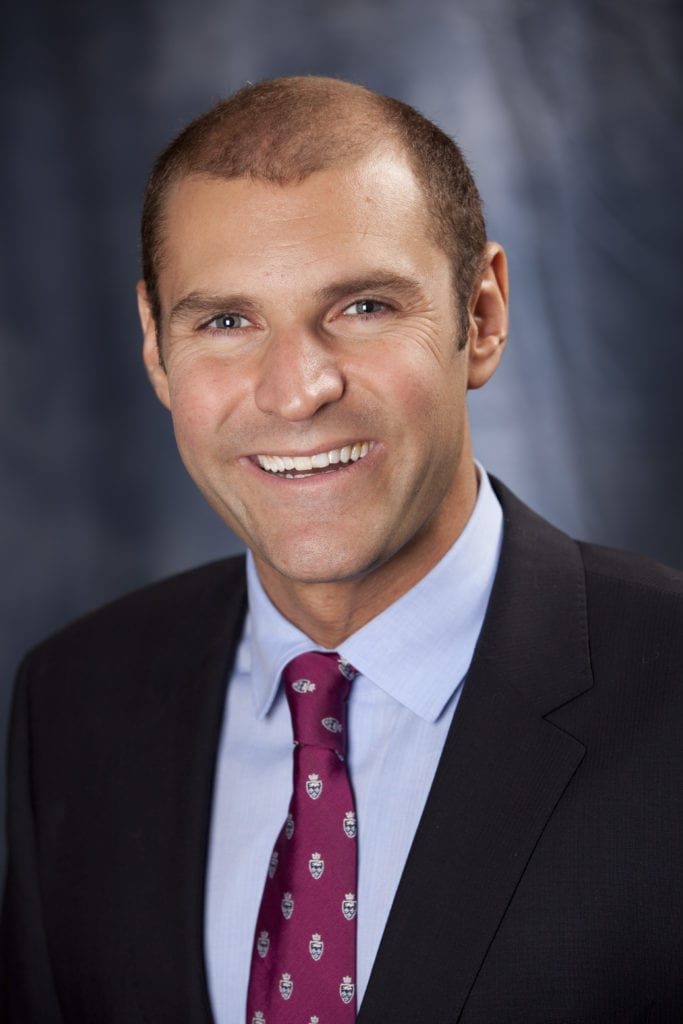
[Editor’s Note: Pardon the interruption of your summer vacation, but the start of the school year is near. For PRNEWS that means our annual survey of education. For our Roundtable this month, we asked PR educators, nearly all of whom are or were professional communicators, “In what areas of PR/communications do colleges/universities need to increase training of students? And why?” Next, we asked PR pros, “What areas do incoming PR pros need the most help? How do they get it?” Their edited responses are below.
The Educators
 Lawrence J. Parnell
Lawrence J. Parnell
Associate Professor, Strategic PR
The George Washington University
PRNEWS: “In what areas of PR/communications do colleges/universities need to increase training of students? And why?”
PARNELL: While the basics--writing, research and media relations etc.--remain critical, the tenor of the times and expectations of management demand more. We’re emphasizing ethics, specifically applied or situational ethics. Students need to be prepared to navigate complex ethical situations. Achieving meaningful results for your company should not require you to compromise your values or take ethical short cuts–but managing your way forward can be tricky.
Second, students must have a foundation in business and finance–with an emphasis on budget management and the ability to read a financial statement or annual report. To be taken seriously you must master business and finance, if you want to participate in high-level strategy discussions.
 Dr. Laura H. Marshall
Dr. Laura H. Marshall
Assistant Professor, Strategic Communication
High Point University
Marshall:Colleges don’t focus enough on research. More and more, market research, focus groups, and surveys are key to creating strategic communications plans. Many undergraduate programs touch on research only lightly. One general research course isn’t enough to understand the nuances of how to word survey questions or conduct focus groups so that participants respond authentically and avoid social desirability bias.
Everybody needs to understand the complexities of social media, but the analytics of it isn’t an area with which most undergrads are all that familiar. Knowing how to parse audiences, response rates, the importance (or not) of shares, RTs and the like matters greatly to companies and corporate bosses. It can tell you what’s working and what’s not.

Jonathan Rick
Adjunct Professor, U of Maryland
Principal, The Jonathan Rick Group
Rick:If you graduate from college without the ability to write well, you should ask for your money back. Too many graduates struggle to craft copy that doesn’t sound like a book report.
It’s a shame more colleges don’t teach courses on Wikipedia. Writing for Wikipedia teaches you how to separate fact from opinion and teaches you HTML.
When it comes to the most common tool in corporate communications—Microsoft PowerPoint—few students have had any formal education, training or professional development. Most of us opened the program one late night in college, cobbled together a deck, and have been learning on the job ever since. That’s unfortunate. Companies are launched on the basis of their pitch deck. If you can master PowerPoint—not only how to create stunning slides, but how to make them flow—you can market your skills far and wide.
 Shelley Spector
Shelley Spector
Adjunct Professor, NY University
Founder, Museum of Public Relations
President, Spector & Associates
Spector: While social media and digital marketing may seem to be all the rage, too many students are coming out of school lacking the fundamentals of PR. That means more journalism classes for training in writing. All types of writing: human-interest stories, op-eds, speeches, and analytical reports--should be taught, and practiced.
Similarly, students need more instruction in media relations. What makes something newsworthy? How do you create story angles for different mediums? Just as important is following the news. Many top job candidates are news junkies. There is also a direct correlation between how much you read news, and how well you write news.
Students need more training in handling PR crises, which requires the communicator to know their businesses thoroughly: financials, management, products, investors and customers. As a result, PR students should take at least one or two classes in business fundamentals.
 Dr. Dustin York
Dr. Dustin York
Director, Undergraduate and Graduate Communication, Maryville University
York: Colleges should require students to acquire certifications as a part of the curriculum. Ultimately, this sets up students for lifelong learning.
Students also need classes where they are forced to interact with industry pros. This helps develop the soft skills of interpersonal relationships.
 Deborah Brown
Deborah Brown
Adjunct Professor at a NY-area university
Brown:I would like to see PR students receive more training in communications writing and presentation skills/storytelling. I’m always impressed with students’ writing skills. While those skills are excellent for English composition classes, they do not work as well in communications, which requires succinct writing. In addition, I would also like to see more emphasis on presentation skills and storytelling. I combine these two because in every presentation, whether it’s presenting an idea to the boss or a large audience, it’s critical to shape the narrative and tell a story versus reading slides (if they are using slides). In addition, being a good presenter gives a new graduate more confidence when going on an interview, whether it’s for an internship or a first job.
The PR Pros Respond
 Nicole Dye-Anderson
Nicole Dye-Anderson
AVP, Media Relations-Partnership
Barclaycard
PRNEWS: What areas do incoming PR pros need the most help? How do they get it?
Dye-Anderson: Writing is crucial, but good writing is expected. Where new PR pros are lacking is in their knowledge of company vision and corporate culture. Often you see young communicators with a deer-in-the-headlights look at meetings. They don’t know who’s talking, so they can’t understand nuances. That leads to a fear of speaking up.
Young PR pros need to take initiative. If they’re unsure who’s speaking, then they should pull the organization chart and find out when they get back to their desk. Write down names for the next meeting. Another part of taking the initiative is learning to volunteer for work. It’s different from school, where you’re given assignments. In the corporate world it’s important to volunteer. You want to build a reputation where people trust that you’ll get things done. And get a mentor. They’ll help you learn corporate culture.
 Michael Lamp
Michael Lamp
SVP, Social and Digital Media
Hunter PR
Lamp: The ability to write with focus and confidence is a skill that remains most vital to a young PR pro’s career development. There are many recent grads with great writing instincts, but little experience harnessing them in the context of what’s needed. The savviest seek continuing education resources to better marry their classroom experience with real-world scenarios.
A second, more nuanced area where young communicators struggle is balancing their experience as consumers of news and products/services with a professional need to craft client stories that earn media and attention. An example of how senior leaders can coach them through this growing pain is to have them look at PR/marketing initiatives from some of their personal favorite brands. Then work backward to unpack how these efforts influenced their experience as a consumer and made them a fan.

Brooke Traister
President, PRSA, Dallas Chapter
Traister: Many entry-level communicators understand PR fundamentals, such as building a communications strategy, writing press releases, and using digital video and social media. They are less familiar with how to write an effective email pitch or build relationships with the media. Another area where they need support is in business literacy and how to work with sales, finance, and marketing. They lack understanding of PR’s impact on those areas of the business.
Fortunately there are myriad programs to bolster media relations’ skills. Encourage new hires to attend those programs. Go with them, if possible. It demonstrates your support of their development and is a great way to show them how to network. For business literacy: Help them learn the questions to ask to get the type of information they need from sales, finance and marketing. Also, make sure to help them understand the larger business landscape and the objectives they’re trying to influence. That context is crucial.
 Morry Smulevitz
Morry Smulevitz
VP, Business and Operations Communications
Walgreens
Smulevitz: The ability to position and promote brands concisely and clearly, in writing, is among the most critical skills in the modern communications world. While many young PR pros are masters at posting pithy quotes on Twitter, the art of persuasive writing has suffered. To gain this skill requires them to soak in good writing…and practice.
New practitioners must understand that we are not press release people. We are business people with an expertise in communications. If your new job includes developing stories that journalists should care about, first learn the business. Walk the trade show floor. Spend time in the call center and in the field with sales reps. Work in the store. Sit in on focus groups. If you expect to engineer an integrated, outcomes-driven media plan to advance business priorities, enhance reputation and tell a meaningful brand story, first learn the business.
 Cari Brunelle
Cari Brunelle
Co-Founder
Baretz+Brunelle
Brunelle: Generally, our new associates are good writers. Even so, long-form writing styles learned in college often need to be refined, particularly when dealing with companies in extremely complex markets, where subjects need to be simplified and explained quickly.
New communicators also need training in serving clients. For most, it is not something they’ve considered. We have a formal training process that stresses empathy and real-world examples from corporate luxury brands.
